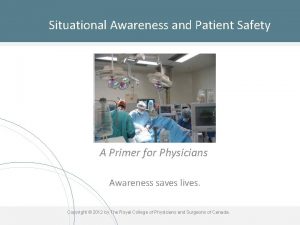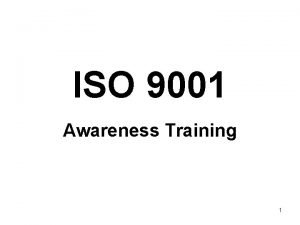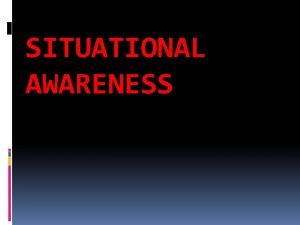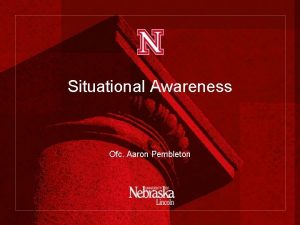Situational Awareness Airport Safety Week 2015 Case Study







- Slides: 7

Situational Awareness Airport Safety Week 2015

Case Study Situational Awareness – Case Study Location: Ramp Area Scenario § A staff member walked behind an aircraft engine at idle, putting himself in danger due to a loss of situational awareness - No injuries sustained § Failed to follow SOP to approach aircraft from the nose. Angle of approach obstructed his view of the beacon. § Awareness of operating aircraft engine impaired due to noise from an adjacent aircraft § Staff member was focused his task to assist a colleague to complete assumed task 2

Background Situational Awareness Concept § Situational Awareness is related to accurately perceiving what is happening in the environment, thoroughly understanding the implications of what has been perceived, and the ability to project into the future in order to determine the appropriate action to take. Look Think Act. § A breakdown of Situational Awareness can lead to poor decision making § May be affected by the requirements to process large amounts of information in a short period of time (e. g. time pressures, resource constraints, job tasks). Situational Awareness and Airport safety § In the context of Airport Safety, loss of situational awareness has the potential to impact workers, visitors & passengers as well as aircraft and airfield operations. 3

Identification of Hazards Situational Awareness Hazard Identification and awareness § Training of workers in SOPs and risk assessment tools § Risk assessments and Job Safety Analyses to identify hazards and implement controls - Industry knowledge - SOPs - Previous incidents (incidents and near hits) and investigations - Personal experience § Supervision § Engineering Controls (e. g. aircraft warning beacons) 4

Contributing Factors Situational Awareness – Case Study Action Contributing Factor A staff member walked behind an aircraft engine at idle • • • Non-adherence to procedures in approaching aircraft Inadequate decision making Insufficient understanding of task at hand Angle which obstructed his view of the beacon • Non-adherence to procedures in approaching aircraft Hearing was reduced due to noise from an adjacent aircraft • Focus was on task only (assisting colleague to • complete assumed task) • Inadequate assessment of operational conditions Inadequate assessment of scenario Inadequate/incomplete communication with colleague 5

Learnings Situational Awareness It is important to always be aware of your operational surroundings to ensure yours and the safety of those around you. Tips in maintaining situational awareness include: § Understanding of processes & procedures regarding the task at hand associated operations. § Approach a task from a big picture perspective – understand the environment and scenario, then use this information to formulate actions § Human factors – be mindful of such things as the effects of fatigue, stress, distractions and procedural/task complexities and the impact they may have on your performance. 6














